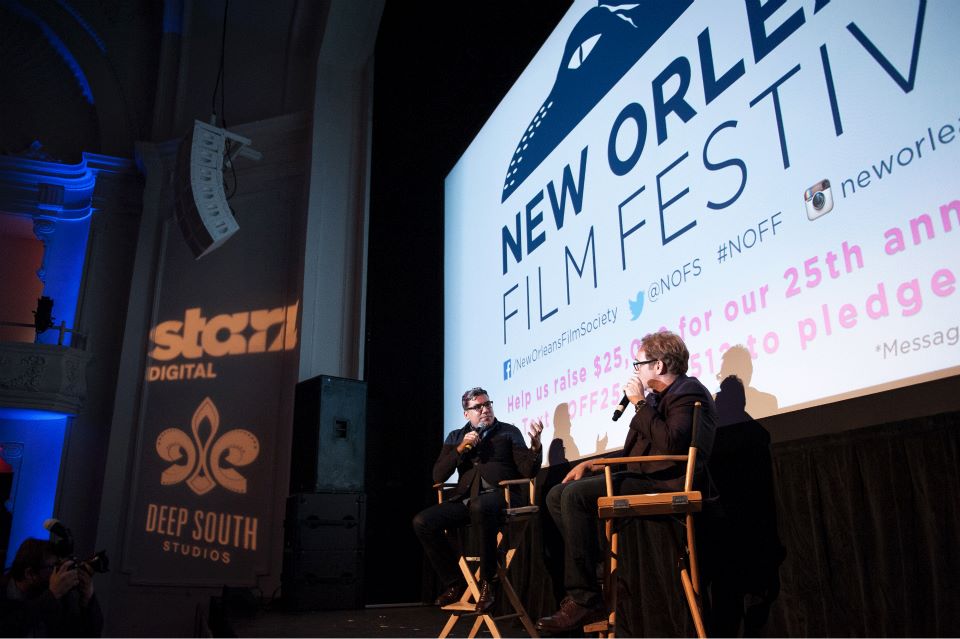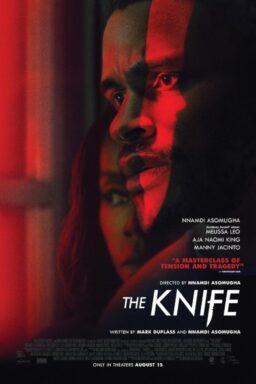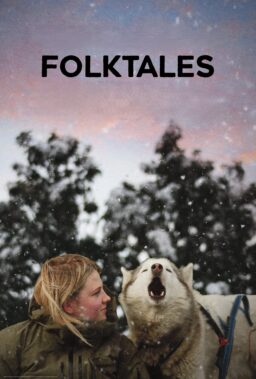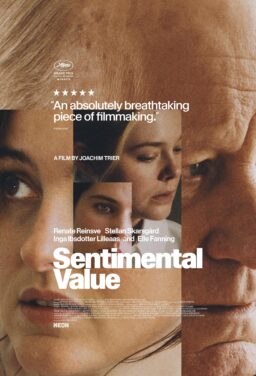“That’s the headquarters of human resistance,” my friend
remarked as we passed a warehouse. I’m in downtown New Orleans with a local
driving around, and she’s explaining how half the city was taken over just a
few months back for the production of “Terminator:
Genisys,” another entry in the long standing franchise.
The fact that big Hollywood productions run around cities is
not shocking or new, but in many ways it is part of a growing trend in the
Bayou. In the last year, science fiction blockbusters (“Ender’s Game”), Golden Age Television (“True Detective”), and last year’s Oscar Winner (“12 Years A Slave”) among other countless productions headed South
for the state’s lucrative tax benefit—a program that topped over $250 million
in returns last year, larger than California and only second to New York.
There are a number of questions at stake in a program like a
tax credit—financial, social, ethical—that one can ask. But the one that
interested me, given the reason I was down there, was what happens to independent
cinema in a place that where Hollywood is taking over?

My visit to New Orleans was first and foremost for the New
Orleans Film Festival, which was entering its 25th year. My main
role was as a juror the Louisiana-made short film competition, though I took
plenty of time to watch features and especially dabble around in the community
(full disclosure: my flight and hotel bill were generously covered by the New
Orleans Film Society and its sponsors).
Like many regional film festivals, NOFF isn’t about a lot of
red carpet start studded premieres, and the trades aren’t announcing any
lucrative distribution deals. Its program selection is a mix of expected Oscar
hopefuls (“Whiplash,” “The Imitation Game”) and smaller films
off the radar of festivals like Sundance or SXSW. I skipped those big titles,
knowing they’ll arrive at most multiplexes in Los Angeles in a matter of
months. However, as Shotgun Cinema
programmer Angela Catalano explained to me, indie distributors often skip
cities like New Orleans because of VOD platforms. If you want to see Jean-Luc
Godard’s 3D extravaganza “Goodbye To
Language,” local filmgoers will only have the festival screening to do so.
While titles from big name filmmakers always get the precedent,
the smaller gems from this year’s festival shined very bright. Brandon Colvin
is a Wisconsin based filmmaker who is also completing a PhD in Film at the
University of Wisconsin, Madison—the home turf of David Bordwell’s
neo-formalist school of thought. I’d like to think Dr. Bordwell would share my
high enthusiasm for “Sabbatical,”
Colvin’s second feature (his first, “Frames,”
is available for free on Vimeo). The
premise is familiar: a nihilistic philosophy professor (Robert Longstreet)
takes the semester off to take care of his ailing mother, while also
confronting his ex-girlfriend and aimless brother (microbudget star Kentucker
Audley). However, “Sabbatical” looks
nothing like the contemporary indies its plot recalls. Colvin works in a method
much closer to Bresson, using static close-ups that disjoint his characters.
Shot in a classical Hollywood aspect ratio with a muted color palette, Colvin
rarely reveals their faces directly to us, nor allows his characters to even
speak above a whisper. Often relying on a meticulously crafted sense of off-screen sound, “Sabbatical”’s formal and
narrative economy gives a physical connection to its characters. As it reaches
its final sequence, Colvin cuts to the core of the film’s central
relationship—an ending that is both tragic and humanizing. Colvin doubts the
film will carry any sort of distributor soon, but the film (and filmmaker) are
worth keeping an eye out.

Amanda Wilder’s “Approaching
The Elephant,” a story of the attempt to start a new “free school” in New
Jersey, is more terrifying to watch than anything in “Gone Girl.” Shot in 4:3 black and white, recalling cinema verite works like “Primary” and “Don’t Look Back,” Wilder follows the main teacher Alex works with a
dozen 12-year-olds in an attempt to teach them true democracy. The children
are free to set up whatever rules they want and call emergency meetings, but
mostly they scream very loudly and run around. Wilder’s film stays centered on
the classrooms, thus leaving the film open to interpretation of what to make of
the possibilities of the methods used.
An even greater subject lies at the heart of New Orleans
native Jessica Oreck’s documentary, “The
Vanquishing of the Witch Baba Yaga,” an essay film examining in part the relationship
between the modernizing post-Soviet countries and its effect on older
traditions. Oreck conveys much of this work through a poetic style: the
gorgeous 16mm footage by Sean Price Williams (“Heaven Knows What,” “Listen Up
Philip”) captures the landscapes of Poland and Ukraine, juxtaposing them
against alienating cinder block homes in the cities. Oreck structures the film
around the retelling of Romania’s oldest witch tale, beautifully animated
through a series of moving picture stills. What begins as a simple fairy tale
turns out to be quite complex—this isn’t just a Russian Hansel & Gretel,
as Oreck shifts the signifiers of morality. “Baba
Yaga” offers a complicated view of progress in the post-Soviet state, where
“Othering” of older traditions puts culture in at a turning point.

The award to Best Louisiana Short, for which I served as a
juror, went to Kenna Moore’s “Church In
Black,” a 13 minute documentary focusing on the relationship between a local
black church and one of its gospel choir members, an open homosexual. Moore’s
editing recalls Frederick Wiseman, as she cuts between a conversation of local
churchgoers discussing their mixed views and the man’s own description of his
passions. Moore seamlessly manages two brilliant tasks through her stylistic
touches: she emphatically humanizes the man, while also never reducing the rest
of the church into bigots, trying to understand where and why certain members
hold their prejudices. She does what the best type of documentaries can
accomplish: she manages to burrow deep into an issue and allow us to make our
own decisions.
“Church In Black”
represents the kind of filmmaking that is too small to reach a large audience,
but importantly captures what is happening in the city right now. The tax
breaks may be very good for many filmmakers, but there’s a difference between
reality and the Louisiana seen in “True Detective,”
where the yellow-hued dirt roads act like an added flavor without much in terms
of specificity. Shorts like “Flight of the
Bumblebee” give a cacophonous view of the city’s music scene from the street
level by taking a “Slacker“-like
approach as it follows characters for a minute before turning down another
street. Other shorts use the city’s long history with mysticism, whether as a
thrilling ghost story in “Her Name Was
Alice” or as a surrealist trip as a character passes into death in “Brokedown Paradise.” And numerous films
dealt with the continuing cultural and political fall out of Hurricane Katrina,
whether in terms of real estate, racial anxieties, or simply the ominous
presence of water. What’s most notable is the space each locale creates—these
are not the crowded streets of New York, but bars with a few regulars, families
in their backyards, or just a street corner with a trumpet player providing a
few blues notes.
NOFF then, is appropriately a film festival but more of a
community of film lovers event, a time to get everyone together and share what
they’ve been working on for the last year. Filmmakers mix with programmers, mix
with juries, mix with regular audience-goers. The Sunday morning brunch for
awards (BBQ shrimp over grits!) was designed as a free for all sit and chat
with whom you please, and not a place of networking but sharing. The main
theater reflected this design as well—a converted mall multiplex with a bar and
tables to chat in between screenings (plus no waiting in hour long lines to
make it into a movie). Even if the festival’s program mixed Hollywood against
these smaller productions, audiences seemed more engaged to find these their
own reflection than the one that Hollywood programmed for them.
NOFF has certainly been able to expand its programming due
to the Hollywood productions that have come through, but the filmmakers there
are still working at a small scale—many of them often crewing on bigger
productions to finance their local work. The 2002 tax incentive has been
effective in some ways—a
Los Angeles Times report notes the creation of 2,760 jobs over the last ten
years—but the big Hollywood talent has been problematically sucking up most of
this money, leaving independent filmmakers stuck in the same model.
This puts New Orleans filmmakers in a state of purgatory.
Many remarked that they had been able to quit side jobs and finally become full
time film crew members by working on these larger productions, but what will
happen when the tax breaks go away and the work moves states once again? And
while the city has been a fantastic resource, it’s only these truly local films
that are giving the city a character on screen that tell us something about the
city at the same time it gives us its narratives.
If we must sit cautiously, I’ll heed the word of an optimistic
festival goer, who had been living in the city for over 50 years: “Everything
always changes.”
(Photo Credit: Craig Mulcahy)











